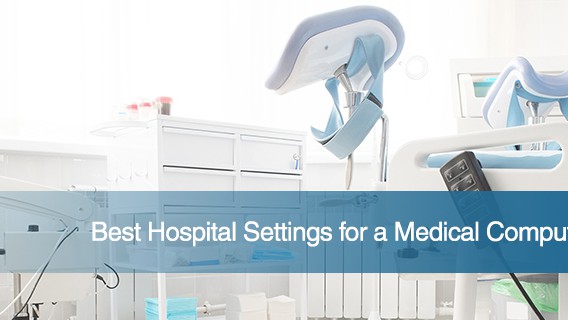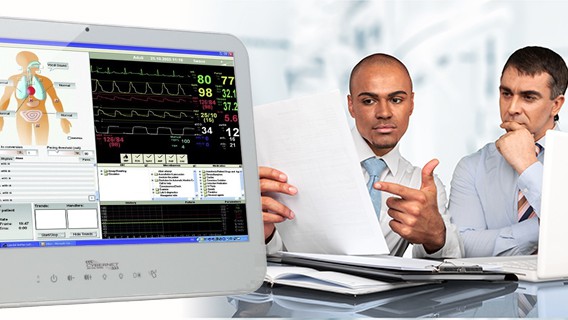With the advancements made in digital technology during the 2010s, we were already on the cusp of radical changes in medicine before COVID-19 hit. Now, things that just seemed like distant possibilities before have rapidly become inevitabilities. Telehealth was still a newfangled luxury at the end of 2019; now, 4 out of 5 physicians use telehealth services. And the pace of change is only accelerating, to the point that a hospital ten years from now will be almost unrecognizable compared to a hospital ten years ago.
So that begs the question: what will hospitals look like in the future, as the adoption of things like rugged medical tablets, medical computers, and the internet of medical things increases?
The Drivers of Change
Article Guide
It is undoubtedly true that the shock of the pandemic has forced healthcare systems worldwide to make drastic changes to the way they operate rapidly. However, many of the forces that will drive hospital design and healthcare changes in the coming decade exist entirely disconnected from the pandemic.
Increased Connectivity
People have become increasingly connected over the past several decades. In the year 2000, less than 500 million people were connected to the internet. By January 2021, that number increased to 4.66 billion. It is highly improbable that this trend will reverse or decelerate any time soon.
Accordingly, patients increasingly expect healthcare services to be provided online. And not just the young digital natives of the millennial and Gen-Z generations, but older patients from the baby boomer generation. This increased tech-savviness also means that patients often research their conditions before seeing a doctor and using their research to guide their healthcare decisions.
Higher Expectations
What we expect of healthcare facilities has changed beyond the desire for digital care. For most of history, even into the modern era, many conditions and injuries were simply untreatable. As such, people understood that they would just have to live with whatever illness or injury they had, assuming it didn’t kill them.
Now, thanks to over a century of medical advances, patients by and large just assume that doctors will be able to treat our conditions and injuries or alleviate our symptoms, whatever they may be. And we assume that we will receive treatment in a clean, safe, and friendly clinical environment.
Aging Populations
The world is getting older. There’s no way around this fact. Population data from across the globe have made the trend clear: the percentage of people older than 65 increased from 6.8% in 1999 to 9.1% in 2019. The UN expects that share to increase to 16% by 2050.
This increase is due to many factors, but the primary driver has been the success of modern medicine. As sanitation, nutrition, and medical treatments have improved, so have life expectancies. Acute conditions are far less likely to end your life and can be treated so that they become long-term chronic conditions that must be managed but won’t kill the patient.
Though we should indeed celebrate these successes, we also need to recognize the increased load this will place on healthcare facilities. We are living longer, and as we do, our medical needs increase.
Hub and Spokes Model healthcare
The most significant thing connectivity has afforded healthcare is the ability to decentralize. In the past, due to the limitations of available technology, hospitals needed to be these massive institutions capable of administering robust emergency trauma care as well as management for complex chronic conditions.
This is because until very recently, broadband electronic data transfer did not exist. Remotely monitoring people’s conditions from their home was just impossible, and if a patient wanted continuity of care across your lifetime, getting the majority of their care at one centralized location was the only way to do it.
Now, thanks to advancements in broadband internet access and things like EMR software, hospitals no longer need to be massive one-stop-shop healthcare facilities but rather just a hub at the center of a larger wheel of healthcare facilities. This is also known as the “hub and spokes” healthcare model.
Internet of Medical Things Revolutionizes What’s Possible
In the future, a central hospital hub will handle things like acute care, emergency care, and complex surgical interventions. Primary care, chronic condition management, basic lab work, and other less intensive types of care would be provided at satellite locations, like a local clinic, supermarket/pharmacy, pop-up event, or even in the home, all as part of a network connected to the main central hub.
By moving chronic care management out of the central hospital hub, the hospital’s resources can be freed up to make emergency care as efficient as possible. This kind of decentralized care would not be possible without advancements in broadband internet access, EMR software, and the Internet of Medical Things.
A Typical Future Patient’s Experience
In the future, a patient will be able to use internet-connected sensors in their home to monitor their vitals and send that information to a doctor back at the central hub, where it is analyzed and recorded into their Electronic Health Record. They can then receive an in-person check-up from a practitioner at a state clinic or event who uses an LTE-enabled medical tablet to access the patient’s health records from the cloud.
Suppose the patient has a flare-up that requires more intensive intervention. In that case, they can be transported to the hospital, where IoMT sensors located at every bed let administrators and EMTs know precisely how much space is available at all times. While in transit, the EMT uses their own IoMT devices to relay real-time information about the patient’s condition to the hospital, so there is absolute continuity of care from the ambulance to the ER.
Once at the hospital, they are no forms to fill out because the EMT used software on their medical tablet to automatically fill out the admittance paperwork. The patient is quickly directed to an empty bed, where a nurse using a medical cart computer takes their vitals and preps them for further care.
Should the patient need to stay at the hospital for an extended period, they will experience the actual efficiency of an innovative hospital. Gone are the centralized nursing stations and the backups that can form there because wireless tablets and hot-swap battery-powered medical computers mean nurses do not have to gather at one spot to get their directives. Gone are all the wires that can get tangled up at someone’s bedside since IoMT devices can transmit data wirelessly.
Also gone is the patient’s limited choice of specialists. Now, instead of being stuck with whatever specialists are employed at your specific hospital location, their doctor can chat with a specialist on the other side of the globe using a medical-grade computer equipped with a webcam. The specialist can receive the patient’s entire medical record and their current, real-time vitals nearly instantaneously over the internet.
Final Thoughts
Thanks to rapid advancements in technology, our healthcare system is changing right before our very eyes. In 10 years, it will be almost unrecognizable to us here in 2021. If you’re interested in seeing how your facility can enter this new world of decentralized digital healthcare, contact the experts at Cybernet today!
Best Hospital Settings for a Medical Computer
September 24, 2015
The importance of using medical computers stems back to when former Secretary of Health and Human Services, Mike Leavitt, noted the importance of effective information technology in hospitals. Levitt, who served in the…
0 Comments5 Minutes
How Medical Computers Are Revolutionizing the Healthcare Industry
October 4, 2015
Medical computers manage patients’ information and allow functions like writing & tracking prescriptions, managing patient billing and tracking all aspects of a patient's medical care. Medical computers are…
0 Comments6 Minutes
You Can't
Learn from a Pop-up
But we can deliver knowledge to your inbox!
We dive deep in the industry looking for new trends, technology, news, and updates. We're happy to share them with you.
Knowledge, News, and Industry Updates Right in Your Inbox




